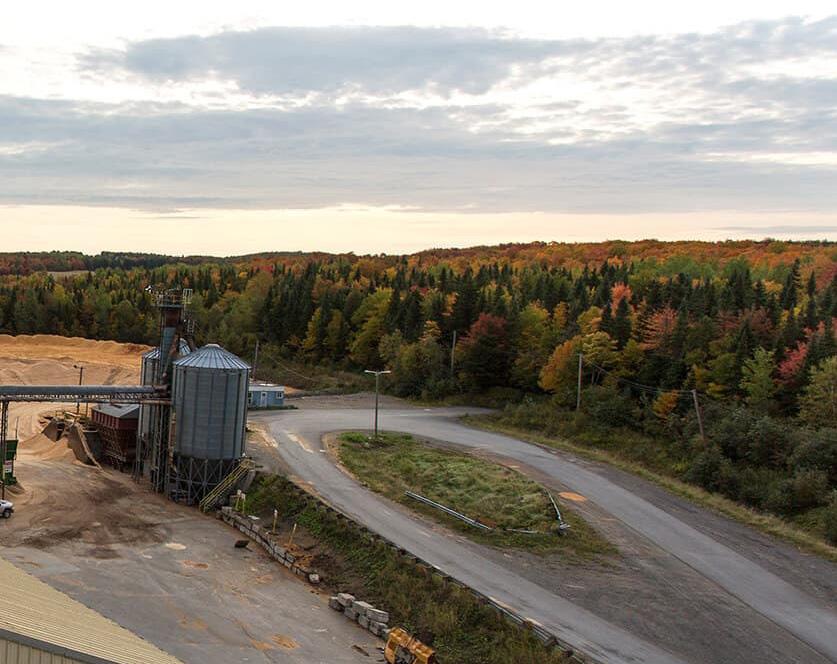
3 minute read
Fiber Optic Linear Heat Detection: Enhanced Fire, Hotspot Sensing
BY JAEDYN MATSALLA
As the demand for alternative and renewable energy sources has grown, the wood pellet industry has emerged as a significant player in the global energy market. In recent years, fiber optic linear heat detection (FO LHD) technology has become a gamechanger by providing an advanced and reliable solution for detecting and preventing hotspots and fires. Protection against fire may not be the primary concern with wood pellets themselves. Nevertheless, operators and users of biomass plants and wood pellet-burning points must ensure the operational safety of their plants, also in terms of fire protection and early fire detection. The production and storage of wood pellets are associated with risks, including the potential for fires. The use of FO LHD technology can mitigate these risks, providing an effective way to monitor temperature changes and detect fires before they become a hazard.
Fiber Optic Linear Heat Detection
FO LHD is a type of fire detection system that utilizes fiber optic sensor cables to detect temperatures along the entire asset that the sensor cable is monitoring. These sensor cables are made up of thousands of measuring points that can detect changes in temperature along their length, making them ideal for use in monitoring large areas such as warehouses, factories, conveyors and storage facilities. Sensor cables can have a length of up to 16 kilometers (16,000 meters) on each of the one, two or four channels.
Wood Pellet Monitoring
In the wood pellet industry, FO LHDs are used as a suitable and tested special fire detector for a wide variety of areas including storage silos, conveyor belts and other areas where the risk of fire is high. These can be used in expolosive gas and dust environments up to zones 2 or 20 on pipelines, con- veyor belts and in hot ambient conditions of biomass and wood pellet plants. Often, these systems are also coupled in conjunction with larger rooftop or greenfield solar systems. The energy generated is transported to the point of use via medium-voltage energy cables; here, too, fiber optic linear heat detectors utilize sensor cables 4 millimeters in diameter to pinpoint temperature measurements (maximum temperature and rateof-rise, plus hotspot detection) and provide early alarming even before the development of an open fire.
Advantages
The advantages of using FO LHD systems in the wood pellet industry are numerous. For example, the system is highly sensitive and can detect heat changes before they become a fire hazard, allowing for early intervention and prevention. This is especially important in the wood pellet industry, where fires can spread quickly due to the combustible nature of pellets. FO LHD systems can detect temperature changes in real-time, allowing for immediate action to be taken.
Another advantage is that these systems are highly accurate and can pinpoint the exact location of a temperature increase, allowing for targeted interventions and reducing system downtime and disruptions to the production process.
Unlike other fire detection systems, FO LHD systems are immune to industrial conditions including electromagnetic interference (EMI), dirt, dust and corrosion, extreme temperature changes, and explosive environments due to gas or dust, making them ideal for use in harsh industrial environments. The system is almost maintenance-free, as the optical fibers do not require any calibration or replacement, reducing the overall cost of ownership and ensuring that maintenance can be conducted without entering the protected area. Lastly, FO LHD systems are cost-effective and provide complete fire detection that is suitable for insurance purposes.
AP Sensing’s FO LHD solution has the most thorough set of type tests and certifications on the market with incredibly fast detection and a low false alarm rate. This solution utilizes a single passive fiber to cover the longest range on the market and offers extremely accurate localization of temperature changes and absolute val ues.
Success Story: Biomass Power Plant in Japan

Biomass power generation uses bio logical materials as fuel to generate elec tricity. Wood chips, wood pellets and palm kernel shells are used as biomass fuel. Us ing biomass fuels as an alternative to fossil fuels enables the reduction of CO2 emis sions during power generation. By nature, woody fuels are flammable. For example, when wood chips stick to moving parts of conveyors, they may cause fire. To prevent this, continuous monitoring along the en tire conveyor of biomass fuels is necessary. Therefore, a renewable energy company selected an AP Sensing FO LHD system for monitoring a newly constructed biomass power plant in Japan. AP Sensing’s system provided many benefits to the customer, including:
• One continuous sensor, monitoring the 4-kilometer conveyor 24/7, 365 days a year
• Pinpointing of temperature measurements for rotors as well as conveyor-side atmosphere
• Graphic display shows real-time temperature
• Historical temperature trace data
• Maximum reliability under harsh, explosive, and EMI environments
• Integrates easily into existing fire detection systems or fire control panel
Conclusion
The use of FO LHD technology provides a wide range of benefits to the wood pellet industry, including continuous, complete fire and hotspot coverage and detection, a reduction of costly downtime and damages, as well as loss of reputation.
FO LHD technology is a cost-effective tool for the wood pellet industry, offering a highly sensitive, accurate and reliable solution for detecting temperature changes and preventing fires. As the demand for renewable energy sources continues to grow, the wood pellet industry is set to expand, and FO LHD systems play a critical role in ensuring the safety and reliability of wood pellet production and storage.









